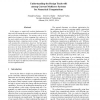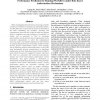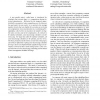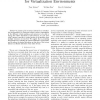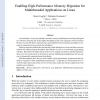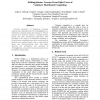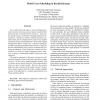IPPS
2009
IEEE
15 years 1 months ago
2009
IEEE
In this paper, we empirically evaluate fundamental design trade-offs among the most recent multicore processors and accelerator technologies. Our primary aim is to aid application...
IPPS
2009
IEEE
15 years 1 months ago
2009
IEEE
When investigating the performance of running scientific/ commercial workflows in parallel and distributed systems, we often take into account only the resources allocated to the ...
IPPS
2009
IEEE
15 years 1 months ago
2009
IEEE
A new quality metric, called area, is introduced for schedules that execute dags, i.e., computations having intertask dependencies. Motivated by the temporal unpredictability enco...
IPPS
2009
IEEE
15 years 1 months ago
2009
IEEE
A reduction is a computation in which a common operation, such as a sum, is to be performed across multiple pieces of data, each supplied by a separate task. We introduce phaser a...
IPPS
2009
IEEE
15 years 1 months ago
2009
IEEE
—Collecting information about user activity in peer-to-peer systems is a key but challenging task. We describe here a distributed platform for doing so on the eDonkey network, re...
IPPS
2009
IEEE
15 years 1 months ago
2009
IEEE
Abstract—A premier goal of resource allocators in virtualization environments is to control the relative resource consumption of the different virtual machines, and moreover, to ...
IPPS
2009
IEEE
15 years 1 months ago
2009
IEEE
As the number of cores per machine increases, memory architectures are being redesigned to avoid bus contention and sustain higher throughput needs. The emergence of Non-Uniform M...
IPPS
2009
IEEE
15 years 1 months ago
2009
IEEE
IPPS
2009
IEEE
15 years 1 months ago
2009
IEEE
We are interested in this paper to study scheduling problems in systems where many users compete to perform their respective jobs on shared parallel resources. Each user has speci...
IPPS
2009
IEEE
15 years 1 months ago
2009
IEEE
Graph-theoretic abstractions are extensively used to analyze massive data sets. Temporal data streams from socioeconomic interactions, social networking web sites, communication t...
